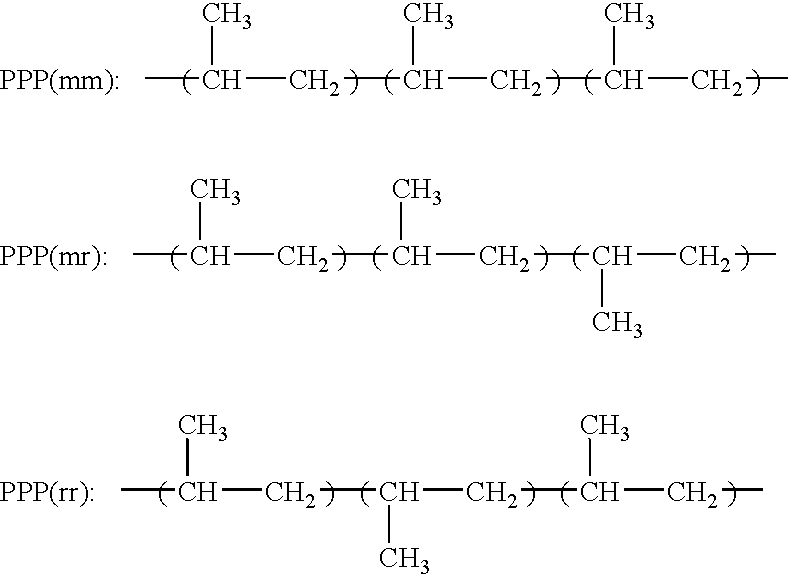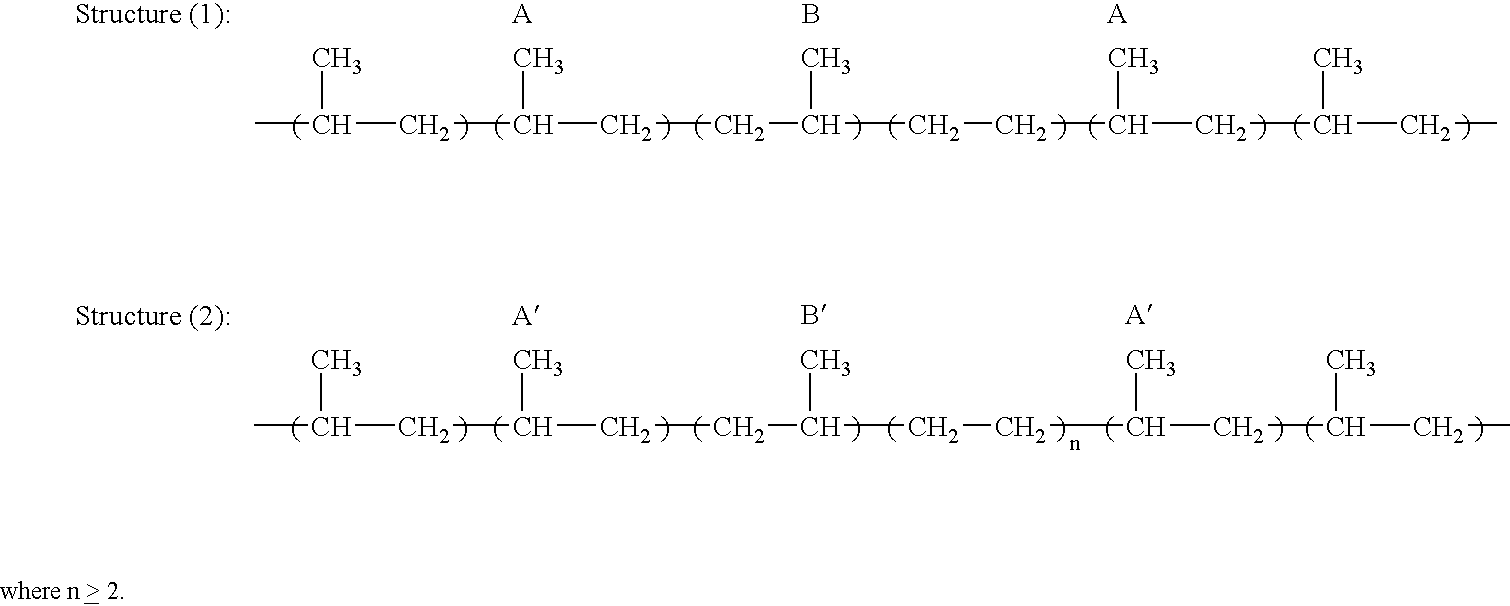Polymerization Process
a polymerization process and polypropylene technology, applied in chemical/physical/physical/physical-chemical processes, chemical/physical/physical-chemical processes, chemical/physical/physical-chemical processes, etc., can solve the problems of high energy consumption, high cost, and high cost of supercritical operations, and achieve low reactor fouling and high catalytic productivity.
- Summary
- Abstract
- Description
- Claims
- Application Information
AI Technical Summary
Benefits of technology
Problems solved by technology
Method used
Image
Examples
examples 1-5
[0239]Examples 1-5 were performed in a 2.0-liter autoclave reactor equipped with a stirrer, an external water / steam jacket for temperature control, a regulated supply of dry nitrogen, ethylene, propylene, and a septum inlet for introduction of other solvents, catalysts and scavenger solutions. The reactor was dried and degassed thoroughly prior to use. Diluent and monomers were purified by passing through a series of columns consisting of molecular sieves (3A and 13X) activated at 600° C. and Selexsorb CD prior to transferring into the reactor. The reactor was dried and degassed thoroughly prior to use. Triethyl aluminum solution (TEAL) (1 mol % in hexane) and hydrogen, when present, were first added into the reactor. Then fluorocarbon and propylene were added into the reactor, and the mixture was then immediately stirred and heated rapidly to a desired polymerization temperature and equilibrated. An additional amount of propylene was then used to add the catalyst-oil slurry to the ...
examples 6-7
[0252]Examples 6-7 are examples of homopolymers of propylene made using unsupported bulky ligand metallocene-type catalyst. These examples were carried out as in Examples 1-5 except that (1) a 0.5 liter reactor was used; (2) an unsupported bulky ligand metallocene-type catalyst (rac-dimethylsilylbis (2-methyl-4-phenylindenyl) zirconium dimethyl) was used, and the polymerization was conducted in a 0.5-liter autoclave reactor. The catalyst was preactivated with N,N-dimethylanilinium tetrakis(pentafluorophenyl)borate (obtained from Albemarle) at a molar ratio of 1:1 to 1:1.2 in about 50 ml of toluene at least 10 minutes prior to the polymerization reaction. About 2 ml of the catalyst stock solution was injected into the reactor. A catalyst solution was prepared and kept in an inert atmosphere at <1.5 ppm water. HFC-236fa is 1,1,1,3,3,3-hexafluoropropane, and was obtained from Dupont (SUVA-236fa). Table 2 lists the detailed polymerization conditions.
TABLE 2Product CharacteristicProcess ...
examples 8-14
[0254]Examples 8-14 are examples of propylene-ethylene copolymers made using HFC-245fa and a supported bulky ligand metallocene-type catalyst. The catalyst and procedure are as that described in Examples 1-5 with the following exception: (1) a 0.5-liter reactor was used; (2) triethyl aluminum (TEAL) (1 mol % in hexane) solution was first added into the reactor. Then the catalyst slurry was cannulated into the reactor using nitrogen. In succession, fluorocarbon and propylene were added into the reactor at room temperature. The mixture was then stirred and rapidly heated to 70° C. Ethylene was then added into the reactor. The amount of ethylene addition was controlled to maintain the differential pressure in the excess of combined vapor pressure of the propylene and solvent by setting the inlet pressure of ethylene feed line at a desired level higher than the registered reactor pressure prior to ethylene addition. Detailed conditions are listed in Table 3.
TABLE 3Product Characteristic...
PUM
| Property | Measurement | Unit |
|---|---|---|
| density | aaaaa | aaaaa |
| density | aaaaa | aaaaa |
| density | aaaaa | aaaaa |
Abstract
Description
Claims
Application Information
 Login to View More
Login to View More - R&D
- Intellectual Property
- Life Sciences
- Materials
- Tech Scout
- Unparalleled Data Quality
- Higher Quality Content
- 60% Fewer Hallucinations
Browse by: Latest US Patents, China's latest patents, Technical Efficacy Thesaurus, Application Domain, Technology Topic, Popular Technical Reports.
© 2025 PatSnap. All rights reserved.Legal|Privacy policy|Modern Slavery Act Transparency Statement|Sitemap|About US| Contact US: help@patsnap.com



